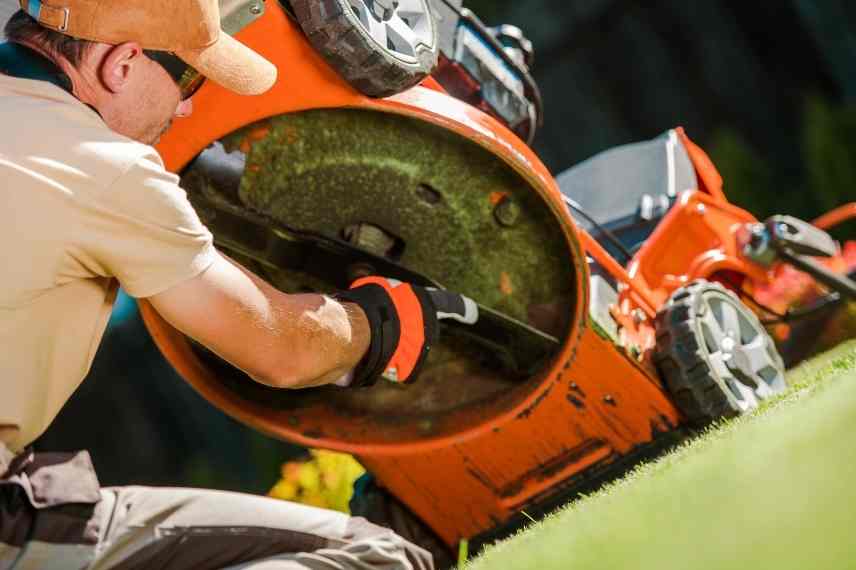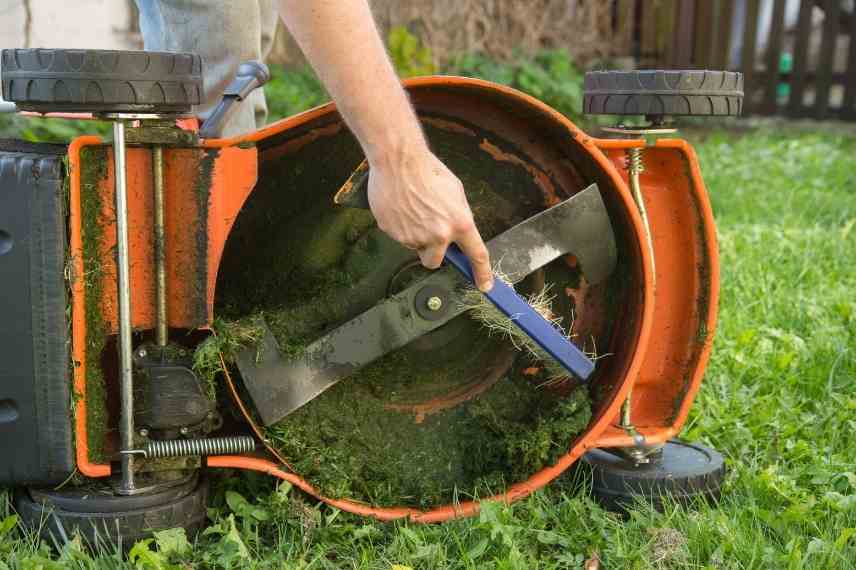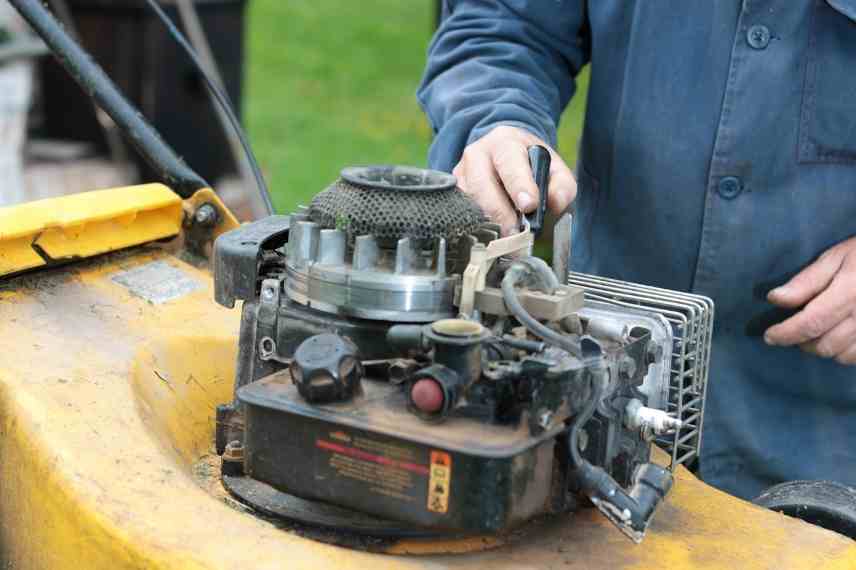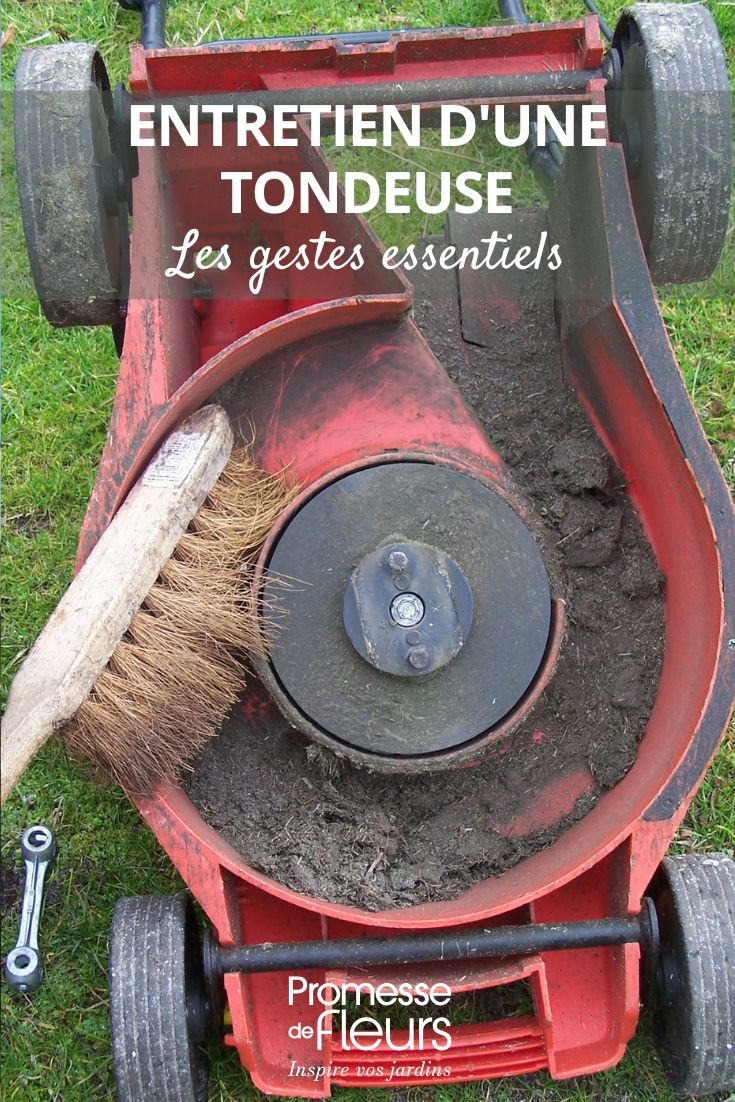
How to properly maintain your lawn mower?
Essential actions to regularly take to increase the longevity and performance of your mower
Contents
Whether thermal or electric, a lawn mower is a demanding tool, whose performance closely depends on the quality of maintenance. Too often neglected, this task is crucial for both the lifespan and performance of the machine, the safety of its user, and the final appearance of the short grass meadow. A poorly maintained engine struggles, a dull blade tears the grass blades, encourages diseases, and ruins the aesthetics of a well-kept lawn. Maintenance is not limited to an annual oil change or a quick clean of the chassis.
Discover how to carry out a rigorous follow-up, season after season, of your mower, including regular tasks and detailed mechanical checks to do yourself or to entrust to a professional.
The fundamentals of engine maintenance
Whether you use a petrol mower or an electric one, whether corded or battery-operated, it is essential to maintain it throughout the year. Some tasks can be performed by you, while others should be entrusted to a professional.
Petrol Mower: The Importance of Engine Maintenance
Petrol models (2 or 4-stroke) are the most demanding in terms of maintenance. Their upkeep is similar to that of a small gardening engine, with essential checks to be carried out before and after each season of use. Likewise, a general service, crucial for safety, should be performed once a year by a professional. This allows for the replacement of defective parts and ensures a check of all safety points. However, if you are comfortable with this type of engine, you can carry out this service, which relies on several points:
- Engine oil change is essential once a year. Professionals recommend using a suitable quality oil such as 10W30 or SAE30, as mower engines operate in challenging environments. It is imperative never to exceed the recommended oil level, as this can lead to leaks or premature engine degradation.
- The air filter should be cleaned after each use as it becomes clogged with dust. A clogged filter disrupts carburation and increases fuel consumption. A foam filter can be washed with soapy water and lightly soaked in engine oil before reinstallation, while a paper filter should simply be blown out with air or replaced. The filter will be replaced during the service if it is deficient.
- The ignition system also requires regular attention as a fouled spark plug can hinder starting or prevent the engine from running. The spark plug should be removed, inspected, and cleaned once a year during the service. If it is defective, it should be replaced approximately every 2 to 3 years, depending on the mower’s usage.
- Cleaning the carburettor should be considered if the engine shows signs of power loss or unstable running.
- The oil level should be checked regularly as the engine generates carbon deposits, which can contaminate the oil. The more residue present, the less effective the oil becomes.
- The fuel in the tank should be drained every 25 to 50 hours of use, or at least once a year. Indeed, unleaded petrol, lacking stabiliser, deteriorates. It absorbs water, which damages the engine parts supplied with fuel. Therefore, it is best not to leave petrol in the tank for more than three weeks. Throughout the year, purchase only the amount of fuel you will use within 30 days. Alternatively, you can also add a stabiliser to prevent any deposits.
 Maintaining a petrol mower is more demanding than that of an electric mower
Maintaining a petrol mower is more demanding than that of an electric mower
Electric Mower: Simpler Maintenance, But Not to Be Neglected
The maintenance of corded or battery-operated electric mowers is less demanding mechanically, but just as important to ensure their proper functioning. It mainly involves checking the electrical circuit, general cleanliness, and the condition of the battery for cordless models.
Regular checks should be made on the condition of the power cable, connections, safety switch, and motor.
For lithium-ion battery mowers, it is essential to store the battery in a dry place at a constant temperature and to keep it charged between 40% and 60% when not in use. A completely discharged battery stored for too long can become unusable.
Sharpening blades, a gesture of precision
The blade is the most stressed part of the mower. Regular sharpening, at least once a season, is essential to restore its sharpness and ensure a clean cut without tearing the grass blades. A well-sharpened blade also reduces the engine’s effort and improves mulching. It is advisable to have this sharpening done by a professional, as the blade needs to be removed and reattached. The professional uses a balancer to properly reposition the blade. Furthermore, the blade must be tightened with precise force, requiring a torque wrench.
 The blade is the most stressed part of the mower, so it must be sharpened regularly
The blade is the most stressed part of the mower, so it must be sharpened regularly
However, if you are absolutely confident and have the necessary equipment, you can attempt sharpening yourself. Before any handling, the spark plug must be disconnected or the battery removed. The blade is removed using an appropriate wrench. The orientation of the blade must be marked before removal to avoid incorrect reassembly. Sharpening is done with a flat file or grinder, respecting the original angle, often 30°, and removing material from each wing to maintain balance. The balance can be checked by placing the blade on a horizontal central axis: if it tilts to one side, material needs to be removed from that side.
A blade that is too worn, bent, or chipped must be replaced.
Regular cleaning of the frame to prevent corrosion
Maintaining the chassis or deck of the mower is an essential task to do yourself after each mowing. Indeed, the accumulation of fermentable plant material promotes corrosion, especially on steel deck mowers, and disrupts airflow. This cleaning can be done with a spatula, scraper, or a stiff brush. The use of a water jet or pressure washer is only possible on compatible decks, and never on the engines. However, avoid high-pressure water jets or cleaners.

Cleaning the chassis or deck of the mower is an essential task to do yourself after each mowing
Checking mobile elements such as wheels
Wheels must turn freely. It is advisable to check their attachment, the play of the axles, and to grease the bearings or bushes with door hinge grease. Poorly attached or warped wheels can disrupt the mowing trajectory and cause jolts in the mechanism.
Self-propelled or ride-on mowers have a transmission system that should be inspected periodically. The drive belt, subjected to friction and wear, can loosen, crack, or break. It should be replaced at the first signs of fatigue. The associated pulleys, axles, and springs must be greased and free of debris.
Winter storage under good conditions
Storing a lawnmower at the end of the season determines its ability to restart easily the following spring. It is essential to empty the fuel tank of petrol mowers (or add a stabiliser), clean the air filter, disconnect the spark plug, and lubricate the moving parts. Engine oil can be changed at the end of the season to prevent acidic residues from stagnating in the crankcase for several months.
The lawnmower should be stored in a dry place, protected from frost, covered with a breathable cover. Never store a lawnmower outside, as the oil can become contaminated with water.
Also take advantage of the quiet period to acquire and stock common wear parts such as the air filter, spark plug, belt, drive cable, a spare blade, and engine oil. This will help you avoid unexpected breakdowns during the season and difficulties in finding specific parts. Many manufacturers now offer annual maintenance kits.
What frequency for each maintenance operation?
The regularity of maintenance depends on the frequency of use. A mower used once a week from March to October will require:
- cleaning of the chassis after each mowing
- checking the oil level every 5 hours of operation
- sharpening of the blade once or twice per season
- an annual oil change or every 25 to 50 hours
- a spark plug replacement every two years
- a more comprehensive service every 2 to 3 years by a professional.
Intensive users, particularly in rural areas or for maintaining large plots, should increase the frequency of checks and keep a maintenance log.

Annual maintenance can be done by oneself or by a professional. However, a more comprehensive service is essential every 2 to 3 years by a professional.
- Subscribe!
- Contents
































Comments